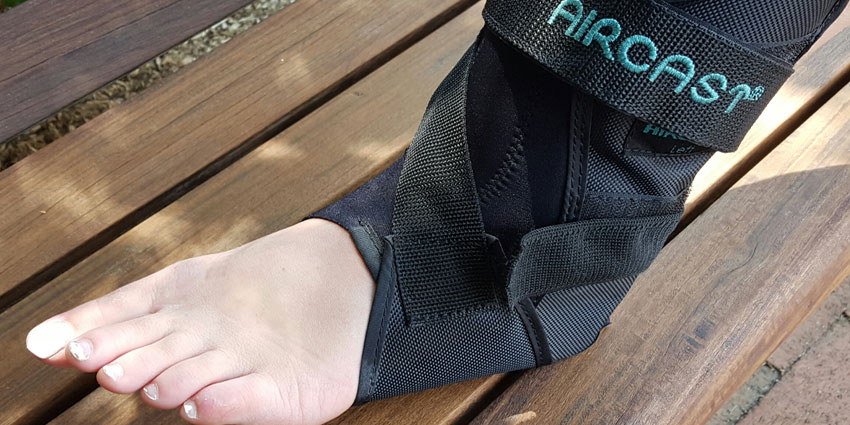Sprained ankles are one of the most common sports-related injuries obtained by people. Although a sprained ankle may not be a major injury, pain in the ankle could be quite a hindrance to daily activities and of course, sports or other physical activities would not be possible without further injuring the ankle.
Depending on the severity of the sprain, there are plenty of sprained ankle treatments in Singapore that can provide recovery from 6 weeks to up to 4 months. However, with adequate rest, proper treatment and rehabilitation, the healing process could be sped up significantly.
Sprained ankles typically occur when the ankle is turned at an unnatural angle and the ligaments connecting the bone and ankle tears.
Symptoms
Typically, an ankle sprain can be identified by the pain, swelling, stiffness and instability. A minor sprain involves a stretched ligament with slight tearing. The pain would not be too intense and it would still be possible to walk with a limp.
If the ligament is completely torn, the ankle joint would lose its function and stability. Intense pain would be felt initially but it would wear off after a while till no pain is felt and swelling would be extensive.
You can identify a sprained ankle by bruising around the affected area, a swollen or painful lump near the ankle, and a general instability of the area.
Treatment
Depending on the severity of the sprain, an ankle specialist or doctor may recommend several treatment programmes to suit your needs. Most of the time, sprains will go away with adequate rest without further pressure on the feet, but extreme cases may call for surgical solutions like arthroscopy.
R.I.C.E:
As with many other kinds of leg and joint injuries, the R.I.C.E (Rest, Ice, Compression, Elevation) method is the first form of treatment to contain the injury and reduce pain and swelling.
- Rest: Avoid weight bearing as much as possible to allow the ankle to heal and prevent further aggravation of the injury.
- Ice: Using an ice pack or ice wrap, apply it on the injured area for 10-15 minutes several times a day. This would reduce the pain and swelling.
- Compression: After icing, use bandage to wrap around the injured area snugly. Make sure that it is not too tight that it cuts off blood circulation.
- Elevation: Raise your leg above the heart level to further reduce the swelling.
These four steps should be repeated at least three times a day or until the pain and swelling subside.
During this time, you should also restrict movement and involvement in physical activities. If you have difficulty walking, consider a crutch or an ankle brace to assist you in your daily routine.
Medication:
Generally, no medication is required for a sprained ankle, but painkillers are sometime given out if necessary.
Nonsteroidal anti-inflammatory drugs (NSAID) can help to reduce the inflammation and reduce pain and swelling.
Other than that, over-the-counter painkillers are also prescribed to handle the pain. These can include ibuprofen (Advil, Motrin IB, others) or naproxen sodium (Aleve, others) or acetaminophen (Tylenol, others).
Rehabilitation
Keeping your ankle immobilized for too long can result in stiffness. Always wriggle your toes or move your ankle lightly whenever possible to keep it flexible. Once the injury has stabilized and is recovering, you can start rehabilitation exercises to restore its motion, strength and balance.
Light Exercises:
You can start off with sitting on a chair and moving your ankle up and down, followed by rolling your foot inward and outward. If these movements are bearable, proceed to stand with legs at hip width apart and lift up one foot at ankle level. Change to the other foot and repeat the reps.
Toe Raises:
Slowly lift your feet off the ground on a tiptoe and hold the position before lowering it back down. Use a support if necessary.
Calf Stretch:
With a wall for support, lean forward with one leg bent and reach out for the wall with both hands at head level. The other leg should be kept straight and feeling the stretch along the calf. Do the same with the other leg.
Prevention
If you often suffer from sprains, you can lower the chances of such occurrences by wearing proper shoes or going through physiotherapy and stretching exercises to improve your balance and footwork.
Other preventive measures can include ankle braces or sports tape which can hold and reinforce your ankle to prevent it from landing at susceptible angles.
One of the most common causes of ankle sprains is weak ankle muscles. You can train your ankles to be stronger with a simple exercise. Wrap a towel around your foot to create some resistance and roll it inward as a simple movement. Do not attempt to do this if your ankle already hurts!










